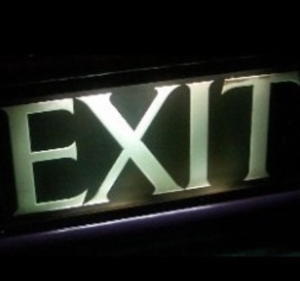Scottish Cinemas and Theatres
Savoy Cinema
52-58 Main Street

|
Savoy
Cinema was built in 1929 for a local company, probably as a cinema
primarily but including facilities for theatre use. The architect was
John Fairweather, who was the house architect for the Green's cinema
chain, although this particular cinema did not initially have any link
with that chain.
Fairweather's influences were more neo-classical than art deco, and his cinema interiors, including the Cambuslang Savoy, usually had giant columns along the sidewalls. The classical, monumental facade is a landmark on the Main Street, and is currently a rather garish shade of yellow. It became a bingo hall, probably in the early 60s, and was renamed Vogue, although it has since reverted to the Savoy name. Currently run by an independent bingo company, the interior is relatively unspoiled, although the engraved glass shop fronts flanking the main entrance have since been replaced. Another photo of the frontage can be seen here. Images below c. 1985 courtesy of the Scottish Screen Archive at the National Library of Scotland.
Current interior images below courtesy of Chris Bradley:
|
Main Street

|
A
small independant cinema, the Empire was on the corner of
Hamilton Road and Clydeford Road, next to the former gas works, between
St Andrew's Church and the bus terminus. It opened in the 1920s, and
closed in the 1960s. It was demolished in 1987.
Photos from June 1986, after the building had been derelict for some time, courtesy of Paul Francis. Exterior:
Interior:
Projection Room:
Ritz
 The
Ritz cinema was built for the ABC chain in 1930 on the site of the
current Spar shop. It was designed by William Beresford Inglis, the
architect and businessman who later designed and ran the Beresford
Hotel in Glasgow's Sauchiehall Street. His other Glasgow cinemas
included the Toldeo/ABC in Muirend and the Boulevard/Vogue
in Anniesland. The Ritz was unusual in that it was an atmospheric
cinema, a particular type of design that Beresford specialised in -
this meant that the auditorium created the impression of sitting in an
outdoor setting, with an open sky above and pseudo-3D buildings along
the sidewalls. Inglis generally created these with a Spanish theme, and
the Ritz followed this by having its entrance in the form of a large
white archway.
It was a short-lived cinema, and was closed and
demolished in 1960. The Ritz Bar is named after it, and occupies a
corner of the site where it once stood.
|
Unless otherwise
specified, all photographs and other material copyright (c) 2001
- 2020 Gordon Barr and Gary Painter.
All rights reserved. Permission for use elsewhere normally granted, but please ask first!
No attempt is made to infringe any existing copyrights or trademarks. Please contact the editors in case of any queries.
All rights reserved. Permission for use elsewhere normally granted, but please ask first!
No attempt is made to infringe any existing copyrights or trademarks. Please contact the editors in case of any queries.





















